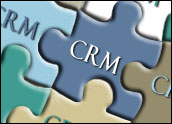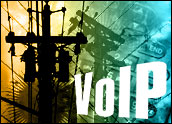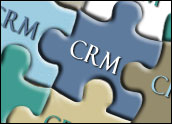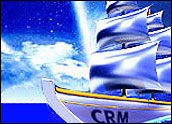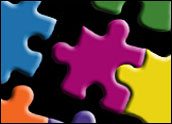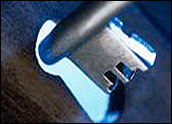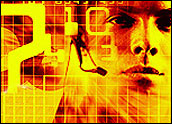
211 is more than a mere convenience to callers seeking information about critical health and human services available in their communities; it can literally be a lifesaver.
“The heightened threat of terrorism in the post-9/11 world and the increase in frequency of environmental emergencies has raised the profile and importance of services such as 211 and 311, which can play a complementary role to 911 emergency services,” Piyush Arora, a Frost & Sullivan analyst, told CRM Buyer.
In the wake of several man-made and natural disasters across the U.S., even FEMA thinks 211 is one of the best means to get information in the hands of individual survivors and victims. “211 has proven itself during times of disaster. FEMA, in an After [Hurricane Katrina] Action report, recommended that all states have a 211 system,” Linda Daily, director of the United Way of America’s 211 system, told CRM Buyer. The Federal Communications Commission authorized 211 nationally in July 2000.
Other countries are also seeing value in a universal number for assistance. “Right now, 211 is being built on the infrastructure of information and referral programs across the U.S. and Canada, which may be best described as a network of 211s,” says Daily.
The benefits are both calculable and invaluable. “During the 2003 SARS outbreak and blackout in Toronto, 211 provided essential, accurate information to thousands of callers,” reports Arora. “In the first three years of operation, Toronto’s 211 center has fielded over 1 million calls, with over 90 percent of callers reporting that they got the help they needed and 97 percent said they would use the service again.”
211 Merges With 311
However, New York City thinks 211 can be further simplified. “We call it enhanced 311 so that we do not confuse our citizens with yet another number to remember. They can call 311 to get anything they need,” Nicholas T. Sbordone, a New York City Department of Information Technology and Telecommunications (DoITT) spokesperson told CRM Buyer. “But if visitors or citizens do dial 211, the call will seamlessly go to our 311 service so they still reach help. People outside our city can call 212-New York (212-639-9675) to access the system if they have friends or family in the city they are trying to help, or if they plan to visit or move here.”
The FCC reserved the three-digit code 311 in February 1997 for accessing non-emergency police and government services, according to Frost & Sullivan. It was primarily designed to alleviate the load on the emergency 911 services.
Many local communities such as New York have already adopted and implemented a 311 service to provide access to non-emergency city services and agencies. Information accessible through 311 includes recycling schedules and information requests, alternate street parking rules, noise complaints, blocked driveway complaints, landlord-related complaints and information about health insurance options for small businesses and individuals.
“Phasing in 211 as enhanced 311 services is a logical extension of services. That way, callers need not worry what department or city-contracted agency handles which concerns, they need only to state their problem. Plus, they can track the city’s progress in resolving the problem,” elaborates Sbordone.
New York averages 40,000 311 calls a day in 170 languages, with a total of 48 million calls so far, and counting.
Donated Brilliance
Early on, a three-digit number was recognized as a solution to a perennial problem by providing “easy access” to community information and referral services. In the early 90s, members of the Alliance of Information and Referral Systems (AIRS) board of directors began to seek an n11 number to be used throughout the U.S. and Canada. AIRS is a professional membership organization comprised of United Ways, community based nonprofits, government-based aging services, libraries, child care organizations, the military and organizations serving people with disabilities, and volunteer centers.
In 1997, an Atlanta businessman was about to terminate a for-profit side business he had been operating with the use of interactive telephone equipment and a three-digit number. He wanted to donate the telecommunications equipment to the United Way of Atlanta. They said what they really needed was the three-digit number. He had a direct connection to the governor and state Public Utilities Commission and United Way petitioned for permission to use the three-digit number for community information and referral services.
“With that series of intertwined occurrences, the Georgia public utilities commission was the first in the country to issue a three-digit number to a nonprofit entity and 211 began,” says Daily.
The 211 Spread
In 2007, approximately 196 million Americans — more than 65 percent of the U.S. population — have access to 211 dialing. There are 212 active 211 systems covering all or part of 41 states (including 19 states with 100 percent coverage) plus Washington, D.C., and Puerto Rico, according to Frost & Sullivan. Out of the remaining states, Wyoming, Arizona, Arkansas, Illinois, Pennsylvania, New Hampshire, Rhode Island and Alaska are planning implementation of 211 services.
“More than 90 percent of those surveyed by the University of Texas Cost Benefit study were satisfied and would call again. We do not have a recent national effectiveness evaluation,” says United Way’s Daily.
The Canadian Radio and Telecommunications Commission (CRTC) approved the use of 211 nationwide in August 2001, subsequent to which Toronto became the first jurisdiction to launch 211 services in June 2002.
In Canada, 211 is available in Calgary and Edmonton (in the province of Alberta) plus Niagara Region, Simcoe County and Toronto (in the province of Ontario). By 2005, 211 services were available to 15 percent of all Canadians. “The goal is to extend 211 services to one-third of Canadians in at least five provinces by 2008, and to extend 211 to all Canadians by 2011,” says Frost & Sullivan’s Arora.
Connecting the Dots
In essence, 211 services unite resources in a central point of contact. “Citizens are customers of the government and we want to make sure they have complete access to government and community services to fulfill their needs,” says DoITT’s Sbordone. “It’s a way to ensure customers get the correct information from the start.”
New York’s service provides basic screening capabilities so that New Yorkers can learn about programs and services they would otherwise be unaware they were eligible for. For instance, a caller inquiring about food stamps may typically only know to ask for one specific need — food stamps. With this system in place, screening by a trained call taker might identify that the same caller is also eligible for the Earned Income Tax Credit, housing assistance, job placement and services provided by nonprofit groups.
The United Way is one of the main sponsors of 211 services in conjunction with state and local authorities in North America. The types of services that can be accessed through 211 include:
- Basic human needs resources (including food banks, clothing closets, shelters, rent assistance and utility assistance);
- Physical and mental health resources (health insurance programs, maternal health, etc.);
- Employment supports;
- Support for elderly and disabled;
- Support for children, youth and families; and
- Volunteer opportunities and donations
According to Daily, 211 information and referral services should also provide:
- Comprehensive and detailed databases of services/resources available in their geographical area. Many provide this information through their Web sites as well.
- Professional information and referral specialists (paid and volunteer) to provide information, assessment and referrals, assistance and advocacy as necessary to meet the needs of the inquirer.
- Provide follow-up on a number of calls to determine if the information was accurate, if they received the services they were seeking and whether additional assistance is required.
Dots Slashed and Scattered
The 211 system sounds brilliantly simple, yet obstacles still remain. “There are various implementation and operational challenges that 211 and 311 type of services face such as coordination between a number of government agencies and non-profit organizations,” says Arora. “Also, unlike 911 services which are emergency services and hence under strict government control; and 411 services which are optional for-profit information services run exclusively by telecom companies; 211/311 services are somewhere in between.”
211 systems are operated by a private non-profit community service organization, local government or local affiliates of the national organization of the United Way of America, according to Arora. Local phone companies are not as keen on them since they are not-for-profit services that do not add to their bottom lines. In addition, the process of implementing these services is complex with the involvement of accreditation agency AIRS, and its local statewide affiliate in the U.S. and InformCanada in Canada.
“Ensuring that all landline and wireless companies have switched on 211 service is difficult. It’s hard to keep track of the new ones that regularly come on the market,” laments Daily.
Securing a sustainable funding stream also presents a formidable problem. “But the federal Calling for 211 Act bills (S211 and HR211) have bipartisan support. Funding will help to extend reach to more Americans and build a national 211 system,” advises Daily.
211 is continuing to evolve and converge, as is the way with most sustainable technologies looking for better financial footing. “311 and 211 services will be colocated and managed in [New York] as a public private partnership. And a number of states are partnering with United Ways and community based 211 providers which will make it easier for people to access government services and reduce overall marketing costs,” confides Daily.
The Future’s Calling
United Way of America commissioned a study to assess the expected costs and anticipated benefits of a nationwide 211 system. This recently concluded study by the University of Texas Ray Marshall Center for the Study of Human Resources came out with the following findings:
- When an individual seeks information or referral services for which they have little or no prior knowledge or experience, dialing 211 is much simpler than other options.
- General information systems, such as 411, provide information that is too general in nature to be very useful and may charge a fee.
- As a one-stop shop for social services, 211 would ultimately save Americans millions of dollars in taxpayer money.
- A national service of this type is estimated to provide $1.1 billion in net value to society over the next 10 years.
Lest anyone think the University of Texas study might be biased in order to aid its client in fund-raising, Arora points out that several studies commissioned by educational institutions and consulting companies like Deloitte have proven that overall economic benefits of 211 services outweigh their costs. “Whether to focus on statewide/nationwide implementation or local community based decentralized implementation is being debated,” says Arora. “In either case, since 211 services are being provisioned by non-profit agencies instead of for-profit corporate entities; local, state and federal governments will have to keep taking the lead in implementing and sustaining these services.”
An Essential Lifesaver
Meanwhile, cities such as New York are pushing forward on 211/311 initiatives. “We are exploring an initiative that we are calling ‘311 on the Web,’ which will provide a choice to New Yorkers by allowing them to manage their interactions with 311 through NYC.gov,” says Paul Cosgrave, the commissioner of DoITT and New York City CIO, told the City Council Committees on Technology in Government and Land Use in March.
“Among the applications to be developed going forward will be one allowing New Yorkers to text images and video from their personal mobile devices to 311, as mentioned by Mayor [Michael] Bloomberg in his State of the City address in January,” added Cosgrave.
It all begs the question of whether 211 and 311 projects have an endpoint or will they continue to evolve year-after-year? “As E-311 evolves, it allows us to further build upon Mayor Bloomberg’s legacy of a city government more accessible and accountable than ever before,” says Sbordone.
Therein lies the truth of it: 211 and 311 services are subject to the fickle winds of politics. Where there is vision in the leadership, 211 and 311 technologies are likely to build and service constituents. Wherever there are budget shortcomings, it’s an easy cut to make. “Since they are not emergency services, governments may treat them as a “nice-to-have” service that has to fit with their current agenda,” says Arora.
However, it is essential to remember that 211 is more then a mere convenience to callers; it can literally be a lifesaver across the nation during the country’s darkest hours.
“Our vision is that it will evolve to a unified 211 system, where callers may dial 211 from anywhere and seek information on the Internet easily, find the help seamlessly and offer help in a coordinated manner,” says Daily.


